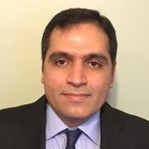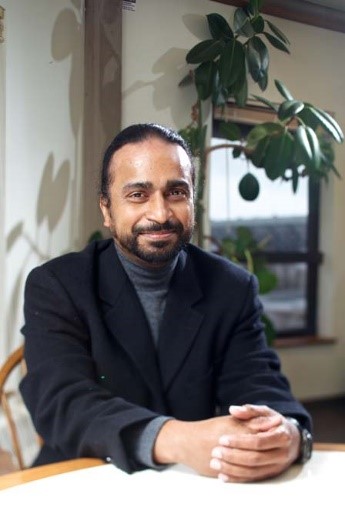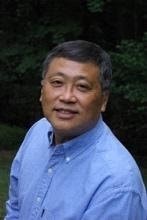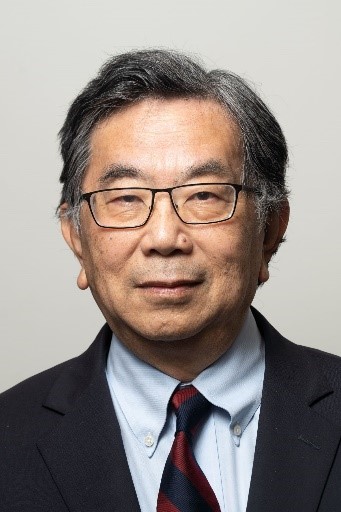Special Sessions
Newest Advances in Systems and Control from Recent DCSD CAREER Awardees
Date & Time: October 3rd Tuesday, 10:00-11:30AM
Location: Sapphire
Special Session WeAMT6
Date & Time: October 4th Wednesday, 10:00-11:30AM
Location: Balcony Room
Session Organizers
Robert G. Landers, University of Notre Dame
Jordan Berg, National Science Foundation
Abstract
This special session brings together recent CAREER awardees from the Dynamics, Control and Systems Diagnostics
program at the National Science Foundation to discuss their research. You will hear about the latest advances in a
wide variety of topics covering both fundamental understanding and cutting-edge applications. The format of this session
will provide the audience ample time for questions and for the entire group to explore future directions in the field of
systems and controls.
Session Talks
"Geometric Understanding of Locomotion"
Ross Hatton, Oregon State University
Abstract
Locomotion is the process by which an animal or robot uses its interactions with the surrounding environment to convert internal
shape changes into net motion through the world. The locomotion process is in general highly nonlinear; in many cases, however it is fundamentally
geometric: the amount of displacement generated over each gait cycle determined by the area enclosed by the gait trajectory, and the cost of
completing this motion is determined by the length and curvature of the trajectory. In this work, we develop tools based on these geometric
principles that provide insight into the optimal motions available to systems with different body plans and in different physical regimes, allow
for fair comparison between disparate locomoting systems, and support data-driven modeling and analysis of gaits.
"The Effects of Viscoelasticity and Heterogeneity in Shaping Dynamic Response"
James Gilbert, Purdue University
Abstract
This presentation details recent research utilizing both material viscoelasticity and heterogeneity to tailor dynamic response using viscoelasticity.
The viscoelasticity is shown through the response of a lumped parameter system that consists of a lumped parameter oscillator attached to a viscoelastic
element. The parameters of the systems can be manipulated to represent a system with viscoelastic elements that has various static bifurcations.
In terms of steady state response due to external excitation, particular attention is placed on the system parameters that yield a bistable system
with a saddle node bifurcation. Here we show that the presence of viscoelastic effects exhibits a deviating response to a system when compared to an
equivalent viscous system and effects the results to chaos. The latter is shown through a Melnikov analysis. The second part of the talk focuses on the
heterogeneous design of mechanical metamaterials that enable stiffness programmability. The prototype is composed of an elastomer matrix containing
diamond-shaped cavities that are selectively confined along their diagonals by semi-rigid plastic beam inserts. The system can admit 212 possible
force-displacement relations; however, by admitting only symmetric patterns, the number of relationships reduces to 72. The talk will conclude with
thoughts on how to combine the results to create systems that can exploit both phenomena to create a desired dynamic response.
"Formalizing Stability in Learning-based Policies with Switched Gaits for Legged Locomotion"
Koushil Sreenath, University of California, Berkeley
Abstract
Learning-based approaches such as reinforcement learning have demonstrated remarkable robustness and adaptability to model uncertainty in achieving
legged locomotion. However, a known limitation of learning-based policies is that they lack formal guarantees. In this presentation, I will demonstrate
that simple techniques from nonlinear control theory can be employed to establish formal stability guarantees for reinforcement learning policies. We
will also see what stability means for motions with switched gaits.
"Fast and Accurate Battery Biometrics: How to Get Them through Optimal Excitation Design?"
Xinfan Lin, University of California, Davis
Abstract
Testing/diagnostics of lithium ion battery to determine its health and remaining useful life is critical for informing actions, such as maintenance,
recycling, and repurposing, to extend the battery system life cycle and enable a circular battery economy. Current testing practice mostly relies on data
from simple empirical input excitations, such as constant charge/discharge and pulse current, which takes significant amount of time and drives up the cost
of testing. We are interested in input excitation design to achieve the optimal balance of testing time and accuracy by combining control, estimation, and
machine learning. We first investigate the design criteria that are directly related to the accuracy of estimating battery health and are feasible for the
optimization of long input sequence. We then explore both model-based and reinforcement learning approaches to solve the formulated input optimization
problem. We will demonstrate a reinforcement-learning trained input control policy that could achieve fast, robust, and accurate testing, when informed by real-time state estimation.
"Modal Analysis of the Human Brain Dynamics"
Mehmet Kurt, University of Washington, Seattle
Abstract
Traumatic brain injury (TBI) is a major cause of death in the U.S., with at least 2.8 million people diagnosed annually and about twice as many unreported cases.
Understanding human brain mechanics associated to TBI represents a crucial step towards improving protective devices and patient outcomes. For this reason,
progress in medical imaging acquisition and processing has accompanied the development of high-fidelity structural models of the brain, using finite element or material
point methods. A crucial point to consider is that the brain is a complex biomechanical system with an intricate geometry, nonuniform interfacial boundary conditions,
and significantly inhomogeneous and nonlinear material properties. Most recent structural brain models feature strong nonlinearity sources, including large displacement
and hyperelastic properties of brain tissues. Peculiar nonlinear dynamical behaviors have been evidenced in several studies of head impacts using these models. Prior studies
analyzed the sensitivity of the human brain to deformation and found localized modes and multimodal behavior in deep regions of this tissue and observed shear-wave redirection near the falx cerebri and the tentorium cerebelli. Due to the complex design of the models and to their significant computation time, however, the exact underlying nonlinear mechanisms could not be unraveled yet. In this context, the objective of the present study is to investigate the fundamental nonlinear dynamics of the brain by using nonlinear modal analysis techniques. In this talk, I will provide insights about the spatiotemporal dynamics of the human
brain by using a combination of finite-element modeling and medical imaging. I will also introduce the concept of “amplitude-resonance”, a fundamental novel concept to
study the dynamics of biological material, including the human brain.
"Balancing Human Needs and Environmental Conservation in Water Systems: a Boundary Control Approach"
Mamadou Diagne, University of California, San Diego
Abstract
Efficient water management strategies are of paramount importance in safeguarding our planet from potential climate catastrophes. To avert potential climate disasters, protect the vital relationships
between water, food, energy, population growth, and maintain a delicate balance of living ecosystems, we must promote and implement efficient water management strategies at local,
national, and global levels. Often, the extraction of water for various purposes, whether through gates or dams manipulation, can significantly impact the stability
and health of ecosystems in the surrounding environment. The alteration of the flow regimes does not only change the natural flow in rivers but can cause
substantial losses of natural habitats, degrade water quality and temperature while inducing huge disruptions in diverse ecological processes that sustain biodiversity.
The focus of this talk is on addressing the challenges associated with managing water resources in human-engineered river courses. The central problem under consideration involves
spatiotemporal dynamics describing the evolution of both water and sediment layers in a river powered by gate actuation mechanisms. I will present results that\ show the exponential
stabilization of rivers’ and reservoirs’ sedimentation process by defining a boundary control problem governed by the Saint-Venant Exner model. PDE backstepping boundary control is
employed to effectively design gate operating conditions that ensure exponential stabilization of supercritical flow regime. Moreover, I will illustrate how event-based
control maintains its fundamental nature as an actuation resource-aware control approach, especially when addressing gate control challenges.
"Enabling Human-Aware and Responsive Automation through Cognitive State Modeling and Estimation"
Neera Jain, Purdue University
Abstract
Across many sectors, ranging from manufacturing to healthcare to military operations, there is growing interest in the potential impact of automation,
and more broadly AI, that is truly collaborative with humans. Realizing this impact, though, rests on first addressing the fundamental challenge of
designing automation to be aware of, and responsive to, the human with whom it is interacting. In this talk, I will motivate and describe the goals
of the research outlined in my NSF CAREER award, namely to establish a cohesive and generalizable framework for control-oriented modeling and online
estimation of the human’s cognitive state. I will especially focus on the design and implementation of the novel human subject study we have designed
to collect the necessary human data for this research.
NSF Funding Information Session
Special Session TuPMT4Date & Time: October 3rd Tuesday, 1:30-3:00PM
Location: Sapphire
Session Organizers
Alexander Leonessa, National Science Foundation
Jordan Berg, National Science Foundation
Abstract
Dr. Alexander Leonessa and Dr. Jordan Berg will be presenting information about the relevant funding programs at NSF, followed by Q&A and discussions with the attendees.
Rapid Fire Sessions
Regular Session TuRFAMT5Date & Time: October 3rd Tuesday, 10:00-11:30AM
Location: Turquoise
Special Session TuRFPMT5
Date & Time: October 3rd Tuesday, 1:30-3:00PM
Location: Turquoise
Description
The session would begin with back-to-back oral presentations of duration 5 minutes each. Once oral presentations are over, a poster session will immediately follow in the same session room.
Poster Sessions
Poster Session TuCPDate & Time: October 3rd Tuesday, 9:30-10:00AM
Location: South Concourse
Poster Session WeCP
Date & Time: October 4th Wednesday, 9:30-10:00 AM,
Location: South Concourse
Description
Held during the morning coffee break, this session will allow contributors to present late-breaking research results in modeling, estimation, and controls.
The session on Tuesday will focus on Manufacturing Controls, while the session Wednesday will cover other areas of modeling, estimation, and controls.
Rising Stars Sessions
Networking Session, Wednesday October 4th, WeAMT4, 10:00-11:30 AM, SapphireSpecial Session, Wednesday October 4th, WeRSPMT4, 2:00–3:30 PM, Sapphire
Special Session, Wednesday October 4th, WeRSEVT4, 4:30-6:00 PM, Sapphire
Special Session, Thursday October 5th, ThRSAMT4, 10:00–11:30 AM, Sapphire
Special Session, Thursday October 5th, ThRSPMT4 , 1:00-2:30 PM, Sapphire
Session Organizers
Satadru Dey, The Pennsylvania State University
Hossein Rastgoftar, University of Arizona
Description
The ASME Dynamic Systems and Controls Division (DSCD) Rising Stars special session will provide an opportunity for the young members of the community to present their research work/portfolio to a
larger audience. This session is designed to help kick-start the careers of postdocs and senior Ph.D. students nearing graduation. The selected individuals will give 13 -minute-long presentations
(with 5-minute Q&A) during special DSCD Rising Stars special sessions to discuss their recent and most high impact research.
Careers after PhD: Possibilities and DEI Perspective
Special Session ThAMT6Date & Time: October 5th Thursday, 10:00-11:30 AM
Location: Balcony Room
Session Organizers
Satadru Dey, The Pennsylvania State University
Hossein Rastgoftar, University of Arizona
Introduction
This session is aimed at young members of the controls community (for example, senior graduating students and postdocs) to make them aware of various future career options. The session will focus
on various career options and discuss sets of challenges associated with them. On the other hand, representation of minority groups remains low in engineering disciplines including controls. It is evident
that the Under- Represented Minority (URM) groups face unique challenges in engineering careers. This special session will address these two aspects and provide an opportunity for the young members of the
community to engage in conversations with representatives from various career paths – including academia, industry, and national labs.
Organization
This event will have two parts: Total 90 minutes (45 minutes for each part) Part 1 will discuss various possibilities and career opportunities in academia, industry, and national labs. This session will be a 45-minute session where panel members will share their experiences, followed by answering specific questions from the audience. Part 2 will start right after Part 1 ends. This will also be a 45-minute session. The same panelists will now focus on specific challenges faced by URM communities in engineering careers. They will first share their experiences, followed by answering specific questions from the audience
Panelists
- Academia: Prof. Juan Ren, Associate Professor, Iowa State University
- Industry: Dr. Nikolai Smolyanskiy, Director of Deep Learning for NVIDIA's Automotive group
Workshop for Middle and High School Students: Learning about Feedback Principles
Sponsor
AACC Technical Committee on Control Education, in Cooperation with the IFAC and IEEE CSS TCs on Control Education
Date & Time: October 5th Thursday, 10:00-1:00 PM,Location: Turquoise (Lunch will be provided)
Organizer
Dr. Daniel Abramovitch, Agilent Technologies, A2C2 EdCom
Introduction
Self-driving cars, delivery drones, temperature control, wind turbines, bioreactors for medicine production, artificial limbs, and robots used in
manufacturing and cleaning floors all rely on one hidden technology: human-built feedback.
For a brief video intro, see: here
Feedback as a phenomenon is everywhere: in our actions, in our bodies, and in the natural world around us. The cycle of “measure, compute, decide, adjust, and repeat” is fundamental to everything we do and everything we learn. Humans use their senses and brains to adjust their actions based on feedback. When people help other people learn to better use feedback, it is called coaching. When humans try to teach machines how to use feedback in an autonomous way, that’s where we come in. So, how do we do it? Well, these days, the way we teach a machine how to move safely around the world and interact with humans, to cook rice automatically, or control the room temperature is through software. In many ways this software is far simpler than a search engine or video game, but it has some extra constraints and stringent requirements made necessary by interacting with and adjusting the real world. Our software has to get good measurements from sensors, compare those to our desired readings, decide what to do about any errors, and then take action to adjust things for the better. Oh, and these actions have to be in the “Goldilocks” zone of not too much and not too little, and they have to be done on time (not too late). In other words, we need to apply the right feedback principles to guide us in writing the proper code.
Preliminary Schedule
- 10:00 AM: Welcome and Schedule (Daniel Abramovitch)
- 10:10 AM: Drone's to the Rescue! (Kam Leang)
- 10:30 AM: What’s a control system and why do I care? (Daniel Abramovitch)
- 11:30 AM: Bio Break, and Grab Lunch
- 12:30 PM: Hands Up Activity
- 1:00 PM: Finish Up
ASME Dynamic Systems and Control Division: Past, Present, and Future
Special Session, WeEVT2Date: Wednesday, October 4th
Time: 4:00-5:30 PM
Location: Cobalt in Tahoe Blue Center
Also Online : Zoom Link
Session Organizers
Jingang Yi, Rutgers University
May-Win Thein, University of New Hampshire
Description
This year marks the 80th anniversary for the ASME Dynamic Systems and Control Division (DSCD).
The purpose of this special session is to bring together a group of Division researchers in academia,
industry, and government agencies and labs to trace the 80-year history of the DSCD, highlight significant
events, show how the Division has evolved and grown over the years, and also provide insight and perspectives
into the future technology developments and Division directions in system dynamics and control.
Moderator

Dr. Xiaobo Tan is an MSU Foundation Professor and the Richard M. Hong Endowed Chair Professor in Electrical and Computer Engineering at Michigan State University (MSU). He received his bachelor's and master's degrees in automatic control from Tsinghua University, Beijing, China, in 1995, 1998, respectively, and his Ph.D. in electrical and computer engineering (ECE) from the University of Maryland in 2002. His research interests include bio-inspired robots, soft sensors and actuators, and dynamic modeling, control and applications of robotic systems. In particular, his group has developed and field-tested autonomous underwater and surface robots for mobile sensing applications. He has published over 300 papers and been awarded five US patents in these areas. Dr. Tan is a Fellow of IEEE and ASME. He is a recipient of the NSF CAREER Award (2006), MSU Teacher-Scholar Award (2010), MSU College of Engineering Withrow Distinguished Scholar Award (2018), Distinguished Alumni Award from the ECE Department at University of Maryland (2018), MSU William J. Beal Outstanding Faculty Award (2023), and multiple best paper awards. Dr. Tan is keen to integrate his research with educational and outreach activities, and has served as Director of an NSF-funded Research Experiences for Teachers (RET) Site program at MSU from 2009 – 2016, Curator of a robotic fish exhibit at MSU Museum in 2016-2017, and PI of a recently awarded NSF Research Traineeship program on water equity and sustainability.
Speaker/Panelists

Dr. Ali Borhan is a connected and intelligent systems manager at Cummins Inc. with solid background and experience in control, machine learning and AI software and digital features development and applications. In his current position at Cummins Research and Technology, he is leading new product development projects in the area of connectivity, automation and energy systems including next generation control, machine learning and AI features to enable resilient and efficient path to decarbonization of the commercial vehicles and freight transportation with electrification, V2X connectivity and automation. He has over a decade of experience in controls and connectivity software product development and leadership within industry. He has a Ph.D. in dynamic systems and control from Clemson University, SC, USA and an M.B.A. degree from Indiana University, IN, USA. He has published more than 50 patents and research articles, is an Associated Editor for the SAE Journal of Connected and Automated Vehicles and a senior IEEE Member.

Dr. Santosh Devasia is a Professor of Mechanical Engineering (ME) at the University of Washington (UW), Seattle where he joined in 2000. Prior to that, he was a faculty member at the University of Utah from 2014-2000. Currently, he directs the Precision Controls Laboratory, and his research interests include theory for iterative learning and information propagation for distributed systems, and applications in human-machine interaction, manufacturing, and robotics. He received his B.Tech. (Hons) from the Indian Institute of Technology, Kharagpur, India, in 1988, and the M.S. and Ph.D. degrees in Mechanical Engineering from the University of California at Santa Barbara in 1990 and 1993 respectively. He is a fellow of the ASME and IEEE societies. A detailed CV is available at http://faculty.washington.edu/devasia/. In ASME, he served on the DSCD Executive Committee during 2017-2022, including serving as the Division Chair during 2020-2021. He has also served the Division in multiple other capacities, including the American Automatic Control Council Board of Directors (ASME Director), IEEE/ASME Transactions on Mechatronics Management Committee, DSCD Honors and Awards Committee, and the editorial board of ASME Journal of Dynamic Systems, Measurement and Control. He initiated and helped launch of the new journal ASME Letters in Dynamic Systems and Control. He was the General Chair of the 2020 American Control Conference, and the General Chair of the 2023 IEEE/ASME International Conference on Advanced Intelligent Mechatronics.

Dr. Eduardo Misawa is currently with the National Science Foundation (NSF) as a Senior Advisor in the Office of Director and Scientific Integrity Official for the Agency. He has been a member and has been involved with the professional societies in the field of systems and control, such as in leadership positions in the ASME/DSCD, IEEE/CSS and AACC. He has a B.Sc. and M.Sc. degrees from University of São Paulo and Ph.D. degree from the Massachusetts Institute of Technology. He held positions at NSF as a program director and several management positions in the Directorate for Engineering, Directorate for Computer and Information Sciences, Directorate for Mathematical and Physical Sciences, and Directorate for Education and Human Resources, before joining the Office of the Director at the NSF. His research and teaching experience includes Nonlinear Dynamics, Dynamics and Control, Nanotechnology, Precision Engineering, Vehicle Dynamics, Bioinformatics, Biotechnology, Biomedical Engineering, Computational and Data Sciences, Machine Learning, Scientific Integrity, and Science and Technology Policy.

Dr. Stephanie Stockar is an Assistant Professor in the Department of Mechanical and Aerospace Engineering at The Ohio State University. She earned her BS and MS in Mechanical Engineering from the Swiss Federal Institute of Technology (ETH) Zurich, Switzerland in 2007 and 2010, respectively, and obtained her PhD in Mechanical Engineering from The Ohio State University in 2013. Before joining the MAE department at OSU in 2019, she was an Assistant Professor of Mechanical Engineering at Penn State University. Dr. Stockar conducts research in the area of optimal control of energy systems with applications to automotive systems and the built environment. Her research approach hinges upon the multidisciplinary integration of thermo-fluid sciences with dynamic systems, modeling, optimization and control theory. Dr. Stockar’s work has been funded by Ford Motor Company, Stellantis, ARPA-E and the National Science Foundation (NSF). Dr. Stockar is a 2021 NSF CAREER Award recipient, earned the SAE Ralph Teetor Educational Award (2021), and the Ralph E. Powe Junior Faculty Enhancement Award in Engineering and Applied Science (2020). She received the OSU College of Engineering Lumley Research Award in 2022 for her research in broad areas of modeling, optimization, and control of nonlinear and infinite-dimensional systems.

Dr. Masayoshi Tomizuka received his Ph. D. degree in Mechanical Engineering from the Massachusetts Institute of Technology in February 1974. In 1974, he joined the faculty of the Department of Mechanical Engineering at the University of California at Berkeley, where he currently holds the Cheryl and John Neerhout, Jr., Distinguished Professorship Chair and serves as Associate Dean for the Faculty in the College of Engineering. His current research interests are optimal and adaptive control, digital control, motion control, and control problems related to robotics and manufacturing, vehicles and mechatronic systems. He served as Program Director of the Dynamic Systems and Control Program of the National Science Foundation (2002-2004). He has supervised about 130 Ph. D. students to completion. He served as President of the American Automatic Control Council (AACC) (1998-99). He is Honorary Member of the ASME, Life Fellow IEEE, and Fellow of IFAC and the Society of Manufacturing Engineers (SME). He is the recipient of the J-DSMC Best Paper Award (1995, 2010), the DSCD Outstanding Investigator Award (1996), the Charles Russ Richards Memorial Award (ASME, 1997), the Rufus Oldenburger Medal (ASME, 2002), the John R. Ragazzini Award (AACC, 2006), the Richard Bellman Control Heritage Award (AACC, 2018), the Honda Medal (ASME, 2019) and the Nichols Medal (IFAC, 2020). He is a member of the National Academy of Engineering.
